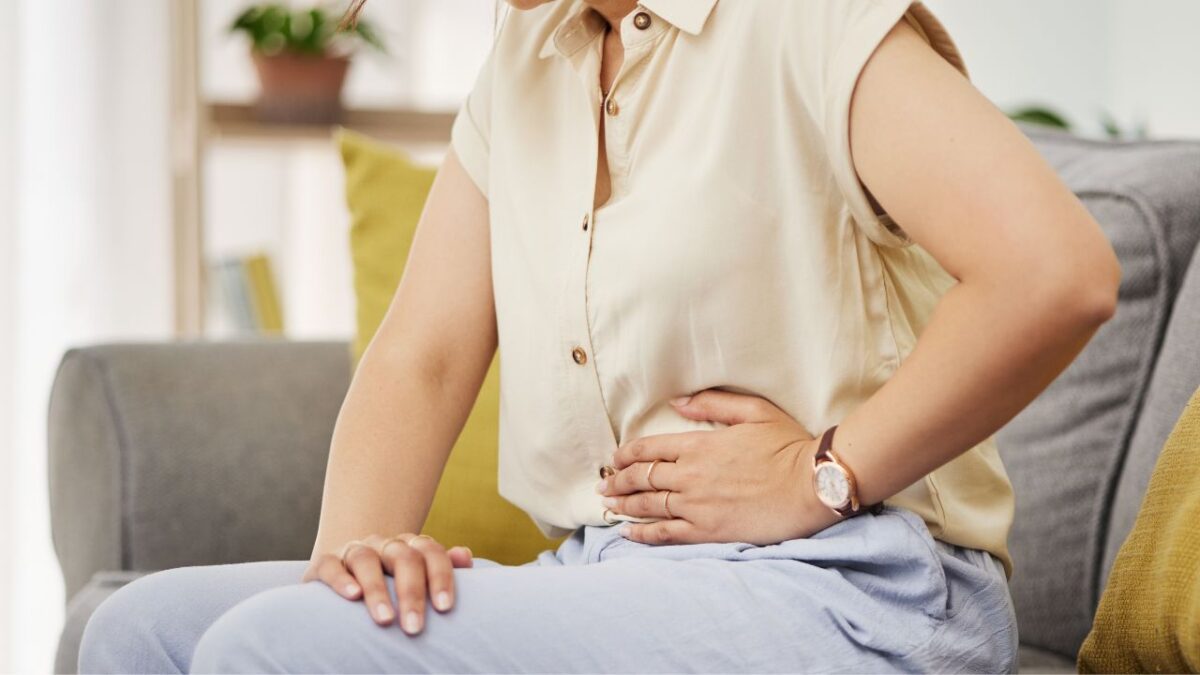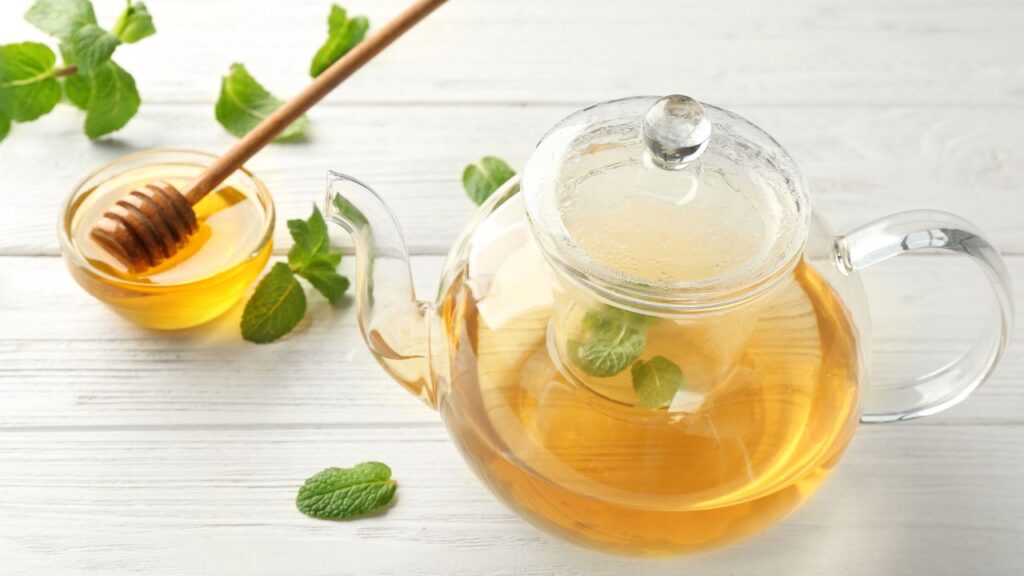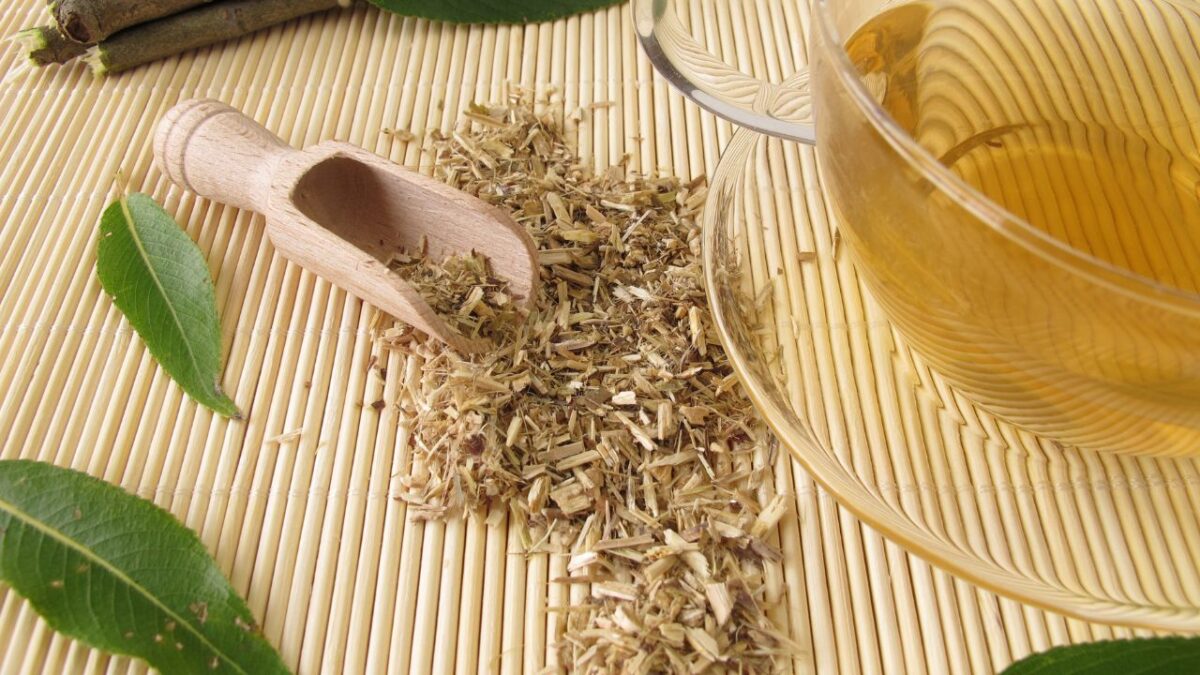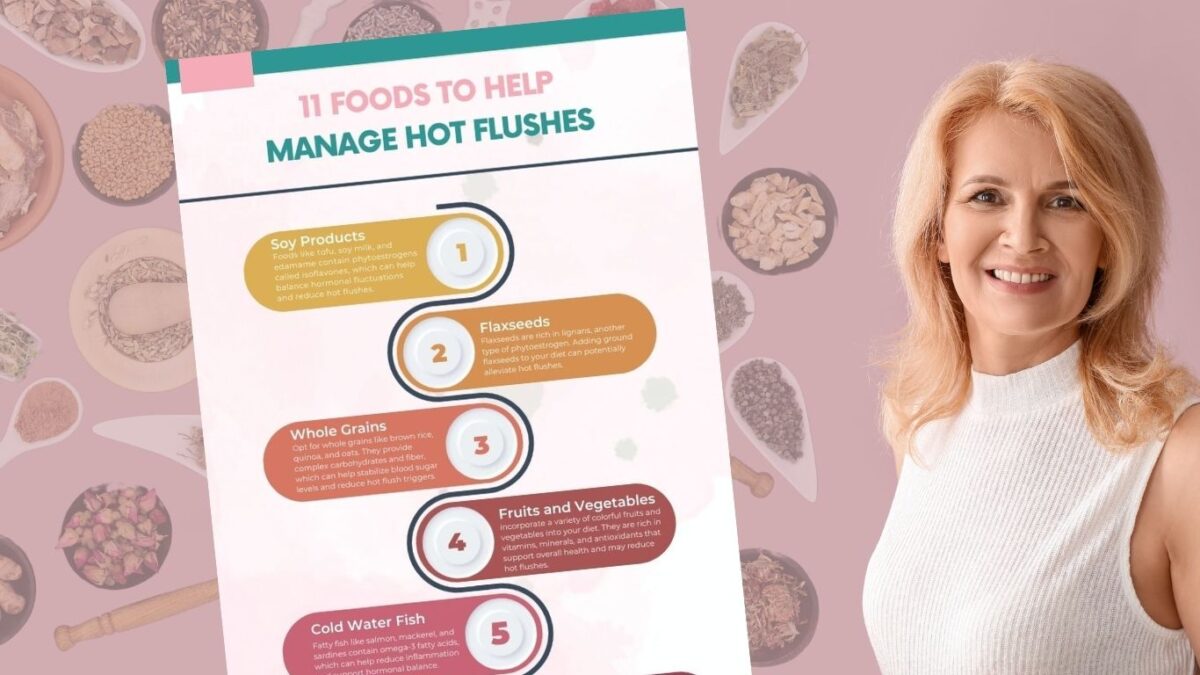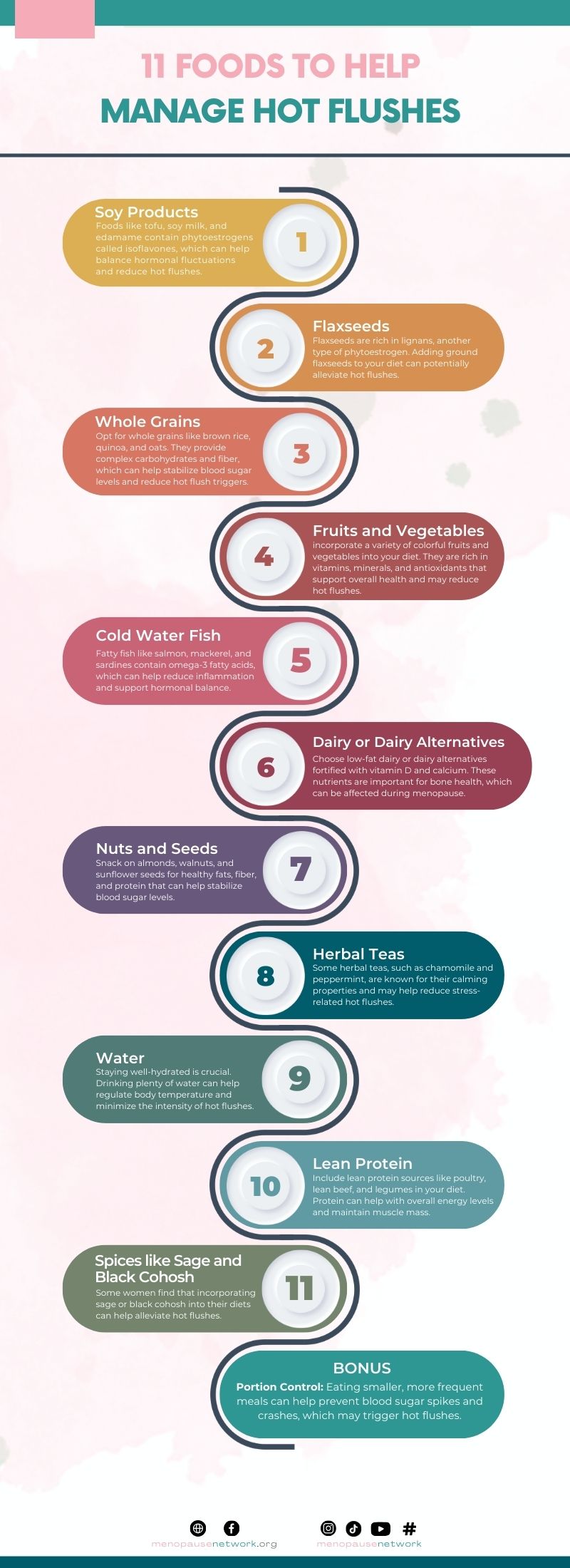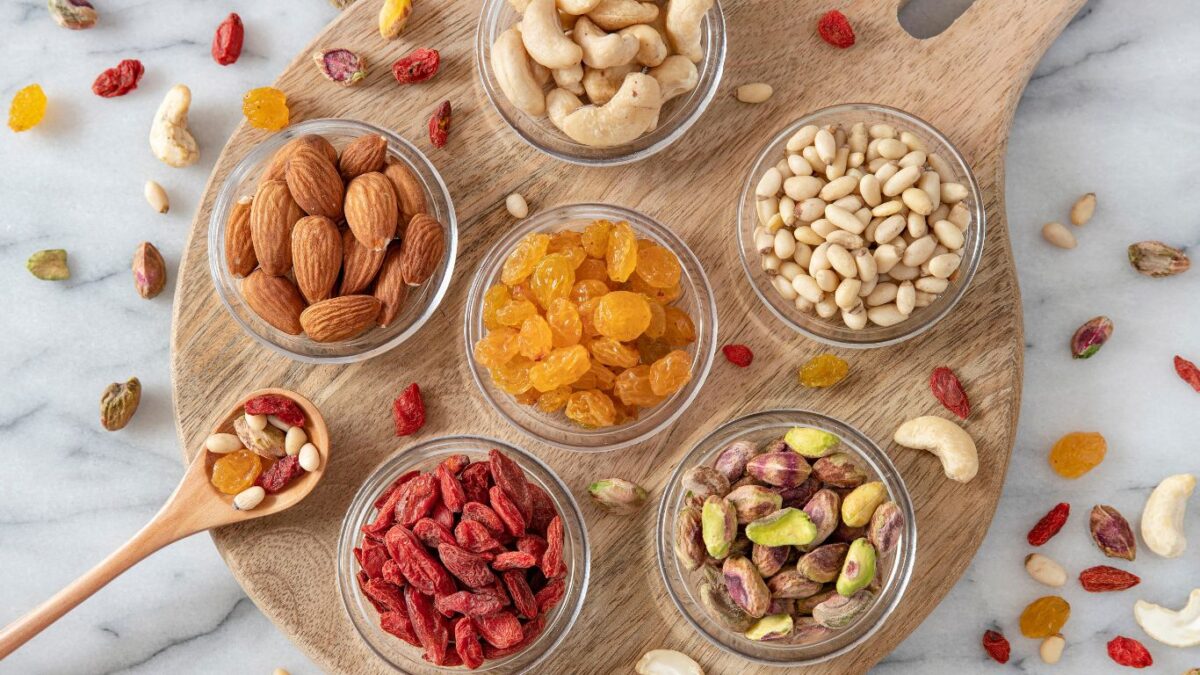1. Black Cohosh
This plant is native to North America, which has roots and rhizomes that have been traditionally used for various health issues, including symptoms associated with menopause. Here’s how and why Black Cohosh is believed to be beneficial in managing menopausal symptoms in women:
How Black Cohosh Helps:
- Estrogenic Effects: Black Cohosh contains compounds that may have estrogen-like effects on the body. This is significant because menopause is characterized by a decline in estrogen levels, which leads to various symptoms.
- Serotonin Activity: Some research suggests that Black Cohosh might influence serotonin receptors in the brain. Serotonin is a neurotransmitter that plays a role in mood regulation, and changes in its levels or activity can influence mood swings and depression.
- Anti-Inflammatory Properties: Black Cohosh has been shown to have anti-inflammatory effects, which might help in alleviating some symptoms.
2. Soy
Soy has garnered attention in the realm of menopause management primarily because of its rich content of isoflavones. These are phytoestrogens, or plant-derived compounds, that exhibit estrogen-like effects in the body. When a woman enters menopause, there’s a significant decline in her estrogen levels, which is responsible for many of the associated symptoms. The isoflavones in soy, particularly genistein and daidzein, can bind to estrogen receptors in the body, providing weak estrogenic effects. This mimicry can help alleviate some of the symptoms caused by the drop in natural estrogen.
For instance, hot flashes, a common and often distressing symptom of menopause, might be reduced in frequency and severity with soy consumption. Additionally, post-menopausal women face an increased risk of osteoporosis due to declining estrogen levels, and some studies suggest that soy isoflavones can support bone health, potentially mitigating this risk.
Menopause can also elevate the risk of cardiovascular issues. The antioxidant properties of soy isoflavones not only combat oxidative stress, which is linked to several menopausal complications, but also promote heart health by possibly improving blood vessel elasticity and reducing cholesterol levels.
Furthermore, there’s some evidence, albeit mixed, that suggests soy might positively influence mood and cognitive function during menopause. For many women, soy offers a natural alternative to hormone replacement therapy, especially for those who might be hesitant or have contraindications to such treatments.
Foods rich in soy, like tofu and soy milk, contain phytoestrogens.
3. Flaxseed
Flaxseed, often considered a nutritional powerhouse, has been increasingly recognized for its potential benefits in managing menopausal symptoms in women. The primary reason for this is the presence of lignans in flaxseed, which are a type of phytoestrogen. Phytoestrogens are plant-derived compounds that can mimic the effects of estrogen in the body.
During menopause, a woman’s estrogen levels decline, leading to a range of symptoms. The phytoestrogens in flaxseed can bind to estrogen receptors in the body, exerting weak estrogenic effects. This can help in counteracting some of the hormonal imbalances that occur during menopause. As a result, flaxseed might help in reducing hot flashes, one of the most common and bothersome symptoms of menopause.
In addition to its estrogenic properties, flaxseed is also rich in omega-3 fatty acids and fiber. Omega-3 fatty acids have anti-inflammatory properties, which can be beneficial in managing other symptoms or complications associated with menopause, such as mood swings or joint pain. The dietary fiber in flaxseed can aid in digestion and prevent constipation, which some women report as a concern during menopause.
Furthermore, the decline in estrogen levels during menopause can increase the risk of cardiovascular disease in women. The omega-3 fatty acids in flaxseed can support heart health by reducing cholesterol levels and promoting overall cardiovascular wellness.
In summary, flaxseed, with its rich content of lignans, omega-3 fatty acids, and dietary fiber, offers a multifaceted approach to managing menopausal symptoms. Its ability to provide weak estrogenic effects, combined with its other nutritional benefits, makes it a valuable addition to the diet of women navigating the challenges of menopause. However, as with any dietary intervention, it’s essential to consult with a healthcare provider to ensure it’s appropriate for individual needs.
4. Evening Primrose Oil
Evening Primrose Oil (EPO) is derived from the seeds of the evening primrose plant and has been traditionally touted for its potential benefits in various health conditions. In the realm of menopause, EPO is often recommended as a natural remedy to help alleviate certain symptoms. The primary component in EPO that garners attention is gamma-linolenic acid (GLA), an omega-6 fatty acid known for its anti-inflammatory properties. When consumed, GLA can be converted in the body to prostaglandin E1, which possesses anti-inflammatory effects, potentially counteracting certain inflammatory processes that might intensify during menopause.
One of the most common reasons women turn to EPO during menopause is to seek relief from hot flashes. Some women have reported a noticeable reduction in both the severity and frequency of these episodes when taking EPO, although it’s worth noting that scientific findings on this are somewhat mixed. Beyond hot flashes, EPO has been suggested to help with breast pain or tenderness that some women experience during menopause, likely due to its anti-inflammatory properties.
Additionally, the hormonal shifts during menopause can lead to mood disturbances, and while EPO isn’t a primary treatment for mood swings, its anti-inflammatory properties might offer indirect mood support by mitigating underlying inflammatory processes.
Furthermore, the transition to menopause often brings about changes in skin texture and elasticity. With its rich content of essential fatty acids, EPO can be beneficial for skin health, potentially enhancing hydration and maintaining elasticity. However, as with any supplement, it’s essential for individuals to consult with a healthcare provider before incorporating EPO into their regimen to ensure its appropriateness and safety.
5. Vitamin E
Vitamin E is a fat-soluble antioxidant that plays a crucial role in protecting cells from oxidative stress. In the context of menopause, Vitamin E has been explored for its potential benefits in alleviating certain symptoms associated with this transitional phase in a woman’s life.
One of the primary reasons women consider Vitamin E during menopause is its purported ability to reduce the severity and frequency of hot flashes, which are among the most common and bothersome symptoms of menopause.
The exact mechanism behind this is not entirely clear, but it’s believed that Vitamin E’s antioxidant properties might help in modulating the body’s response to declining estrogen levels, which is a primary trigger for hot flashes. Additionally, the skin often becomes drier and more susceptible to aging during menopause, and Vitamin E, known for its moisturizing and skin-protective qualities, can support skin health during this period. Some women also report that Vitamin E helps in managing vaginal dryness, another common symptom of menopause.
Furthermore, the antioxidant properties of Vitamin E can be beneficial in countering the increased oxidative stress and potential cardiovascular risks that come with menopause. While many women find relief with Vitamin E supplementation, it’s essential to approach its use with caution. Not all studies conclusively support its benefits for all menopausal symptoms, and excessive intake can lead to potential side effects.
As always, it’s crucial for women to consult with a healthcare provider before incorporating Vitamin E or any supplement into their regimen to ensure its appropriateness and safety.
6. Regular Exercise
As women navigate the challenges of menopause, characterized by declining estrogen levels and various physiological changes, exercise emerges as a potent tool to mitigate several associated symptoms.
Firstly, weight gain is a common concern during menopause, and regular physical activity can help in managing body weight by increasing metabolic rate and promoting muscle mass. This is crucial not just for aesthetic reasons but also for metabolic health, as increased abdominal fat can elevate the risk of cardiovascular diseases. Speaking of cardiovascular health, the decline in estrogen during menopause can increase the risk of heart-related issues, and exercise is known to enhance cardiovascular function and improve blood lipid profiles. Beyond the physical aspects, menopause often brings about mood swings and episodes of depression or anxiety. Engaging in regular exercise can act as a natural mood booster, thanks to the release of endorphins, often termed “feel-good” hormones. Exercise also aids in improving sleep quality, addressing another common complaint during menopause—sleep disturbances.
Furthermore, the risk of osteoporosis rises post-menopause, and weight-bearing exercises can play a pivotal role in maintaining bone density and strength. In essence, regular exercise offers a holistic approach to managing menopausal symptoms, providing both physical and psychological relief. However, it’s essential for women to choose activities that they enjoy and can sustain in the long run, ensuring consistency and maximizing benefits.
7. Yoga and Meditation
Yoga and meditation, ancient practices rooted in mindfulness and physical discipline, have been increasingly recognized for their therapeutic benefits, especially during life transitions like menopause. Menopause often brings a cascade of physical and emotional changes, and both yoga and meditation offer holistic approaches to navigate these challenges.
Physiologically, yoga provides a gentle yet effective way to maintain flexibility, strength, and balance. The various asanas or postures in yoga can specifically address common menopausal concerns like weight gain, muscle loss, and decreased bone density.
Additionally, certain poses can be beneficial for alleviating symptoms like hot flashes and sleep disturbances. On the emotional and psychological front, the hormonal fluctuations during menopause can lead to mood swings, anxiety, and feelings of sadness or irritability.
Meditation, with its emphasis on focused breathing and present-moment awareness, can help regulate these emotional upheavals. It offers a space for introspection, allowing women to connect with their changing bodies and emotions more deeply. The practice of meditation can also enhance stress resilience, which is particularly beneficial as stress can exacerbate many menopausal symptoms.
Similarly, the breathing exercises or pranayama, often integrated into yoga routines, can induce a sense of calm, alleviate anxiety, and improve sleep quality. In essence, yoga and meditation provide a dual benefit for menopausal women, addressing both the physical challenges and emotional complexities of this phase.
By fostering a deeper mind-body connection, these practices empower women to embrace menopause with grace, strength, and equanimity.
8. Stay Hydrated
Staying hydrated is a fundamental aspect of overall health, and its importance is accentuated during the menopausal transition. As women go through menopause, their bodies experience a myriad of changes, driven primarily by fluctuations in hormone levels.
Hot flashes is one of the prominent symptoms of menopause which can lead to increased sweating and, consequently, a higher loss of fluids. By maintaining adequate hydration, women can help counteract the fluid imbalance caused by these episodes.
Additionally, the hormonal shifts during menopause can sometimes lead to dryness in various parts of the body, including the skin and the vaginal tissues. Proper hydration can support skin health, maintaining its elasticity and reducing the appearance of dryness or flakiness. It can also alleviate some of the discomfort associated with vaginal dryness.
Beyond these specific symptoms, hydration plays a crucial role in numerous bodily functions. It aids in digestion, ensuring that the gastrointestinal tract functions smoothly, which is particularly significant as some women report constipation or other digestive issues during menopause. Adequate water intake also supports kidney function, helping in the efficient elimination of waste products.
On a cellular level, hydration ensures that nutrients are transported effectively, and metabolic reactions occur efficiently.
Furthermore, staying well-hydrated can enhance cognitive function and mood, both of which can be affected during menopause. In essence, while hydration is a simple act, it offers multifaceted benefits, making it a vital component in managing the challenges and symptoms associated with menopause.
9. Limit Caffeine and Alcohol
Limiting the intake of caffeine and alcohol can be particularly beneficial for women navigating the challenges of menopause. Both substances can influence the body’s hormonal balance and exacerbate certain menopausal symptoms. Caffeine, a stimulant found in coffee, tea, and many soft drinks, can intensify hot flashes and night sweats, two of the most common complaints during menopause. Additionally, caffeine can disrupt sleep patterns, making it harder for women to fall asleep or stay asleep. Given that many menopausal women already experience sleep disturbances, consuming caffeine, especially in the latter part of the day, can further aggravate these issues. On the emotional front, while caffeine might offer an initial boost in mood and alertness, its eventual wear-off can lead to mood swings or feelings of fatigue, adding to the emotional roller-coaster that some women experience during this phase.
Alcohol, on the other hand, can have a range of effects on menopausal symptoms. While moderate alcohol consumption might offer some cardiovascular benefits, excessive intake can have the opposite effect, increasing the risk of heart diseases. This is of particular concern as the decline in estrogen levels during menopause already elevates cardiovascular risks. Furthermore, alcohol can also disrupt sleep architecture, leading to fragmented sleep or difficulties in achieving deep sleep stages. Like caffeine, alcohol can also exacerbate hot flashes and night sweats. Moreover, alcohol can act as a diuretic, leading to dehydration, which can further intensify certain menopausal symptoms.
10. Maintain a Balanced Diet
A balanced diet plays a pivotal role in overall health and well-being, and its significance becomes even more pronounced during the menopausal transition.
Firstly, with the decline in estrogen levels during menopause, women face an increased risk of osteoporosis. A diet rich in calcium and vitamin D can support bone health, reducing the risk of fractures and bone density loss. Foods like dairy products, fortified plant-based milks, leafy greens, and fatty fish can be particularly beneficial in this regard.
Additionally, many women experience weight gain during menopause, partly due to changes in metabolism. A balanced diet, emphasizing whole grains, lean proteins, healthy fats, and plenty of fruits and vegetables, can help in managing weight by providing essential nutrients without excessive calories. Such a diet also ensures steady blood sugar levels, which can be crucial in managing mood swings and energy fluctuations.
Furthermore, the risk of cardiovascular diseases increases post-menopause. Consuming foods rich in omega-3 fatty acids, like fatty fish, flaxseeds, and walnuts, along with reducing saturated and trans fats, can support heart health. Antioxidant-rich foods, such as berries, nuts, and vegetables, can combat oxidative stress, which often intensifies during menopause.
Digestive issues, like bloating or constipation, can also become more prevalent during this phase. A diet high in fiber, derived from whole grains, fruits, and vegetables, can promote digestive health and regularity.
Eating a diet rich in fruits, vegetables, whole grains, and lean proteins can help manage menopausal symptoms.




